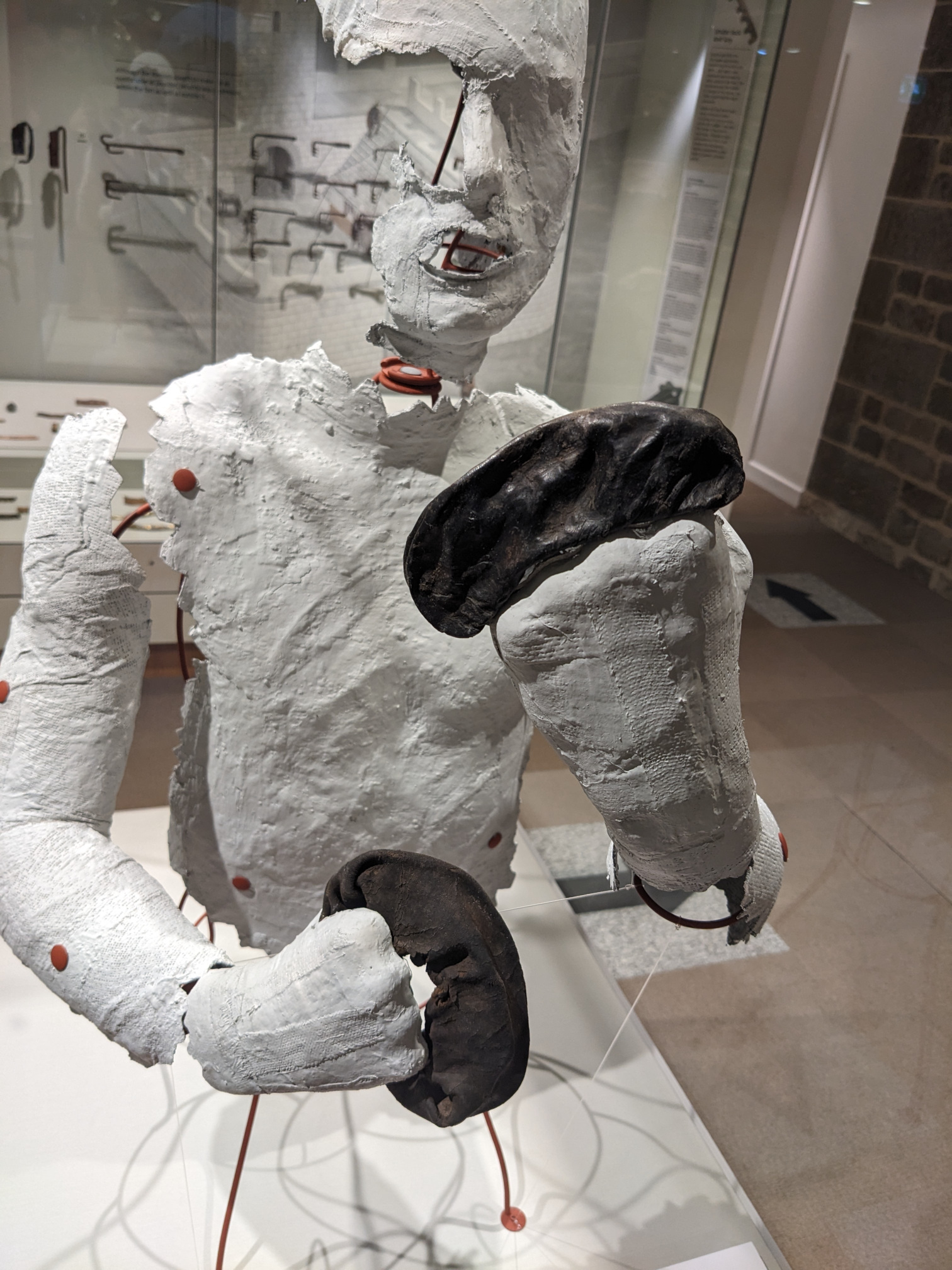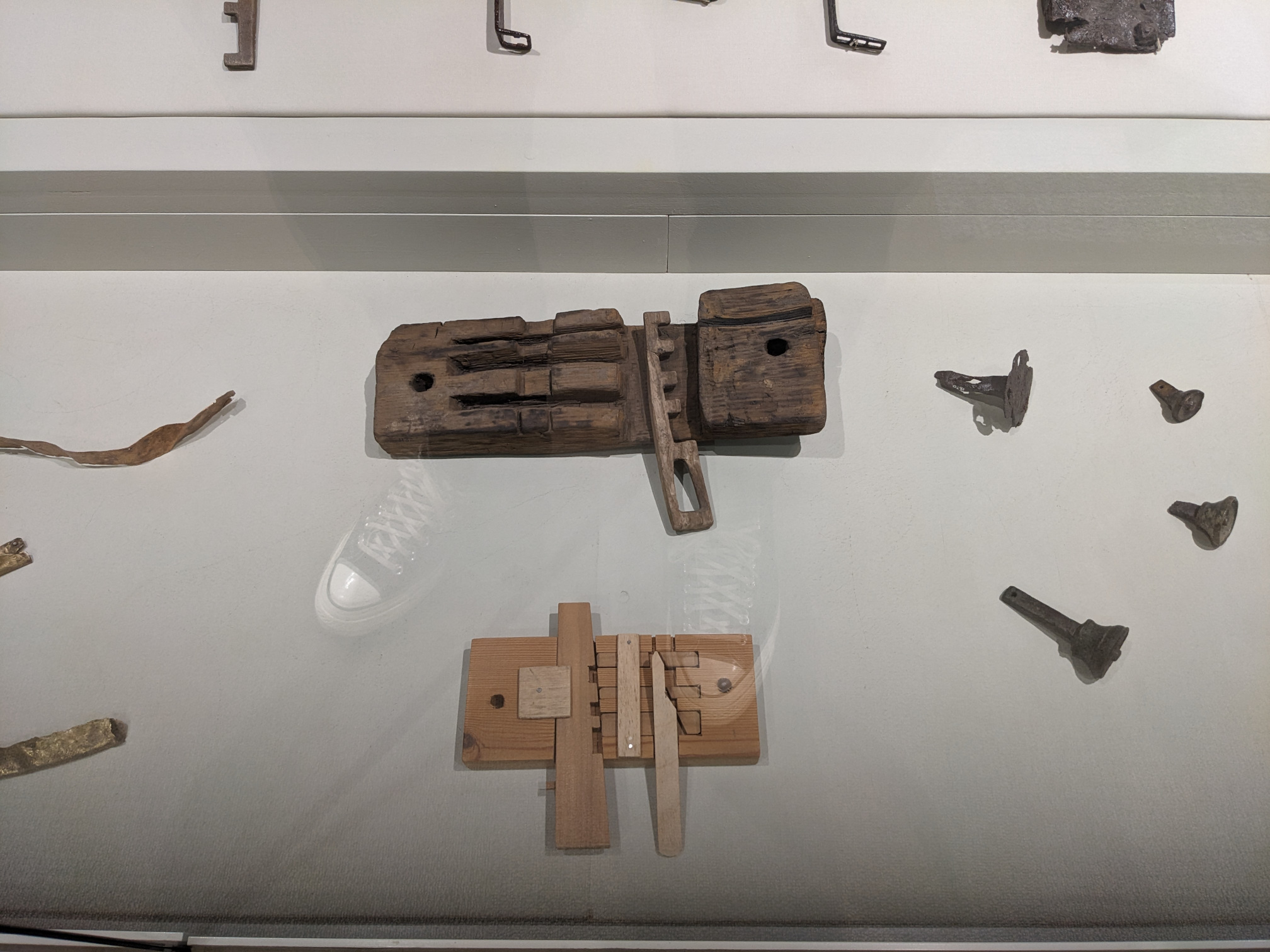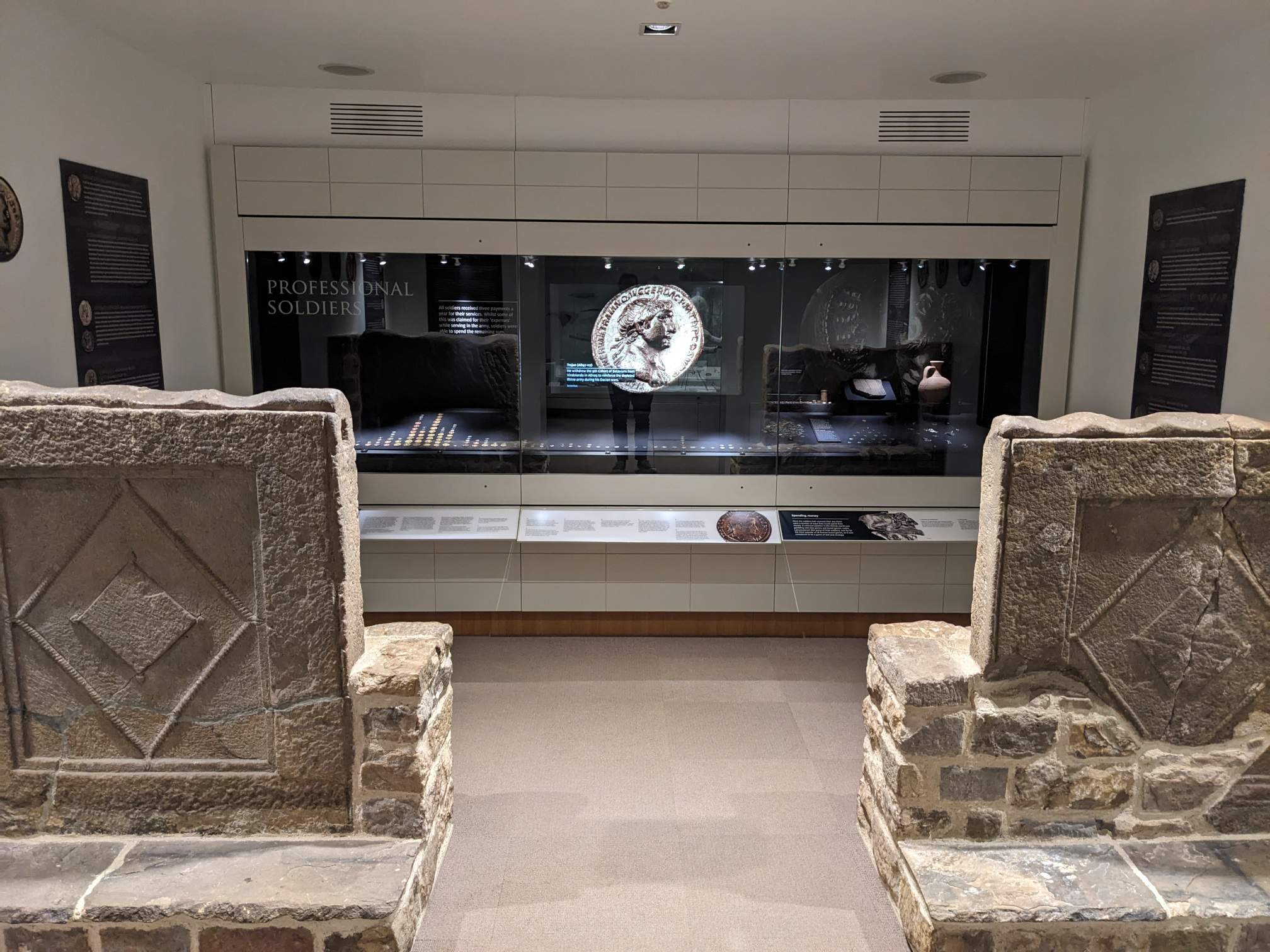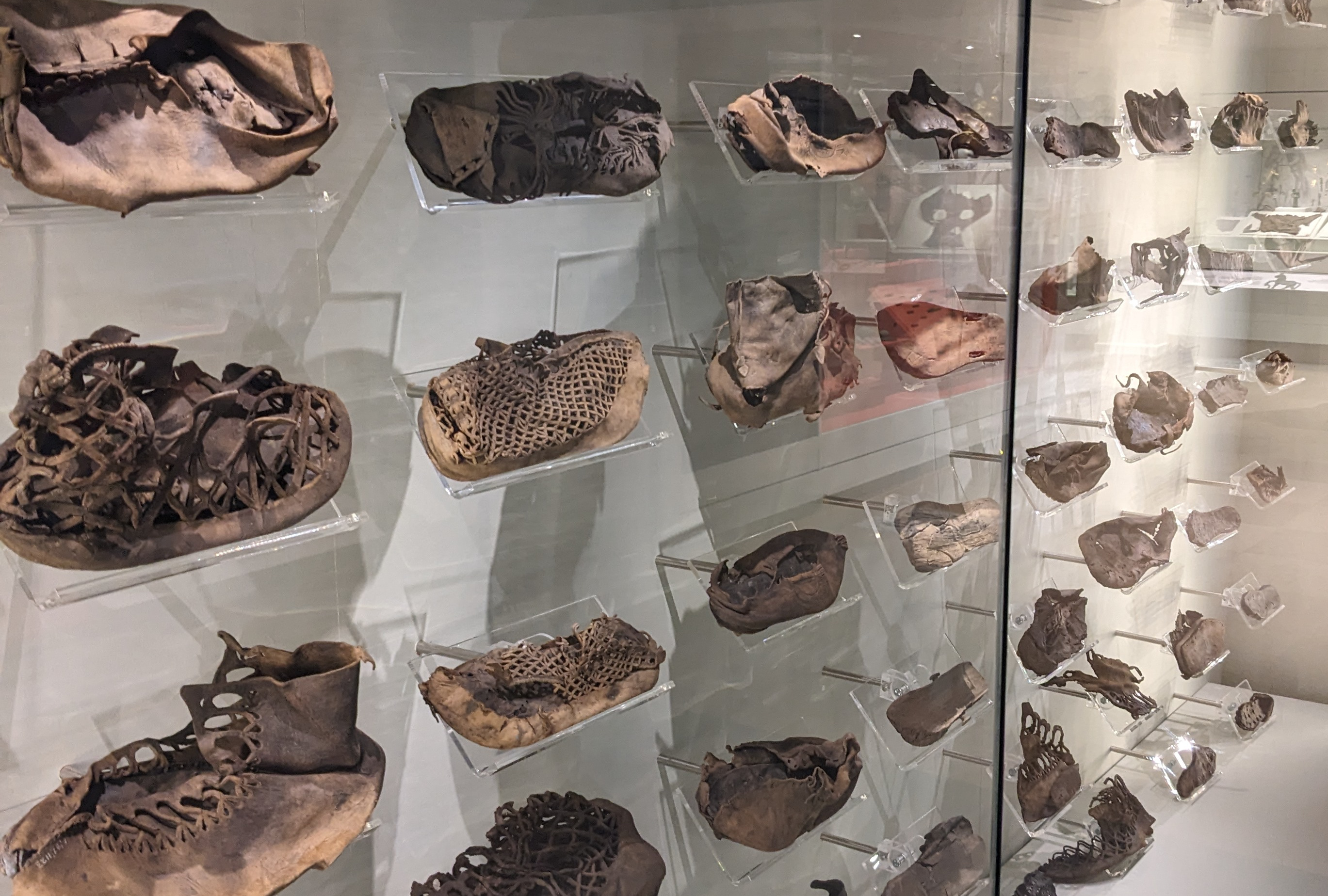Vindolanda Day 7: Vindolanda Museum
Posted on April 28, 2024 • 3 minutes • 531 words
 This is part of a series
where I document my time volunteering at an archaeological dig in North England in April 2024.
Have a look at some of the other posts to see some of the cool things I got up to.
This is part of a series
where I document my time volunteering at an archaeological dig in North England in April 2024.
Have a look at some of the other posts to see some of the cool things I got up to.
On the second day off from the archaeological dig at Vindolanda I decided to go visit the museum.
Honestly, it is one of the best Roman museum exhibitions I have seen. The sheer quantity and variety of finds at Vindolanda mean that there are some fantastic exhibits from keys to tent leather to writing tablets.
Its hard to pick a star exhibit, but perhaps the leather boxing gloves found in the anaerobic layer deserves that spot. The anaerobic layer is the waterlogged, peaty level of the dig that hasn’t been exposed to oxygen for many hundreds of years. As a result, most of the bacteria that degrades historical artifacts such as leather or wood are not present. It existence at Vindolanda is one of the reasons for the fantastical finds at the site.

The museum is much bigger than you expect, partially due to its layout. You enter from the front desk into a smallish room with some big ticket items (boxing gloves, horse masks, dozens of shoes including those of Sulpicia Lepidina ). After viewing the coin room, you pass through a blind corridor and emerge into an even larger area boasting pottery, glass, bones, leather and the all famous writing tablets.
However, what makes the museum so great is not just the breadth and quantity of material, but the way in which is is presented. Often museums simply place the object on a plinth and ask us to imagine how it was used/worn. As hinted to with the boxing gloves though, the Vindolanda museum puts the objects in their place: gloves on a mannequin, medical tools in a pouch, spear heads on glass spears. A lot of thought has been given to keeping the object in focus rather than the reconstruction, while giving enough context for the viewer to appreciate how each item might have looked in everyday life. For example, here is a lock next to a modern reconstruction, without which I wouldn’t understand the apparatus.

Another subtle example of this is the coin room. The room showcases the wealth of… wealth found at Vindolanda and lists the relevant emperors next to their likenesses on coins found at the site. However, if you look at the layout of the room you notice two unexplained upright stone walls.
 This mimics the layout of the strong room within the principia (headquarters) of the fort as it would have been almost 1900 years ago. The strong room would have been guarded night and day and contained the wages (in coins) of the soldiers of the fort. Its a subtle nod: an example of the extreme care that has gone into the museum exhibits.
This mimics the layout of the strong room within the principia (headquarters) of the fort as it would have been almost 1900 years ago. The strong room would have been guarded night and day and contained the wages (in coins) of the soldiers of the fort. Its a subtle nod: an example of the extreme care that has gone into the museum exhibits.
They also feature finds from last year’s excavations, including a complete full-sized wooden shovel! A couple of the artifacts our team has come across have parallels in exhibits. I look forward to returning next year (with Sarah perhaps) to see what 2024 adds to the museum.
